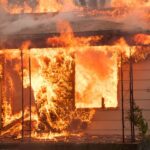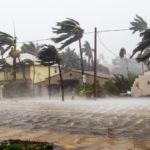andNevada
Unfortunately for California ans Nevada residents, the wildfire season in the summer and fall can be a dangerous time for those that live in high-risk areas. Cities like San Diego have many residential areas at risk of wildfire.
If you live in a high-risk area, use this brief guide on how to come up with an emergency wildfire plan for the household and what it should include.
What Your Emergency Wildfire Plan Should Include
You want your emergency wildfire plan to be as extensive and comprehensive as possible so that you’re not overwhelmed with trying to plan and make decisions with a wildfire looming. When it’s time to enact the emergency plan, you and the others should know what to do, where to go, and what to bring.
An Evacuation Route & Meeting Point
A wildfire can occur quickly, making a sensible evacuation route crucial to ensuring you and your household’s safety. Have a physical map with the route highlighted in your emergency go-bag, and ensure everyone in the house understands where to go. In the chaos of a wildfire and evacuations, you don’t want to have to rely on the accuracy of your smartphone’s apps and internet speed.
It’s also wise to pick a designated meeting point for the entire household if you separate or aren’t together when the evacuation happens. The meeting place can be a public business outside the hazard area or the house of a friend or relative who you trust.
Emergency Supplies Kit
Along with knowing where to go, you should have a go-bag of emergency supplies ready to take at a moment’s notice. You don’t want to waste precious time finding needed supplies or forgetting something on the go.
Your wildfire emergency kit should include:
- Water and non-perishable food for all household members
- A first aid kit
- Any necessary medications
- A flashlight
- A battery-powered radio
- Extra batteries
- A portable smartphone charger
You may also want to consider some fire-resistant clothing that can hold up in a forest fire. You don’t need the entire uniform of a firefighter, but protective shirts, hats, or pants can help protect you from fire and embers.
A Communication Plan
Communication is critical to the safety of the household in the event of a wildfire evacuation. Unfortunately, cell networks, phone lines, and internet systems can be unreliable in the midst of a disaster, so it’s best to develop a communication plan.
A good strategy is to designate someone outside the household (a relative or family friend) in a safe area as the point of contact. Instead of everyone trying to contact each other, they can reach out to the point of contact who can communicate and coordinate more effectively than a group of people experiencing an emergency.
It’s vital to come up with an emergency wildfire plan if you live in a high-risk area. Make a plan together and ensure everyone understands it and their roles to provide your family peace of mind should the worst happen.






